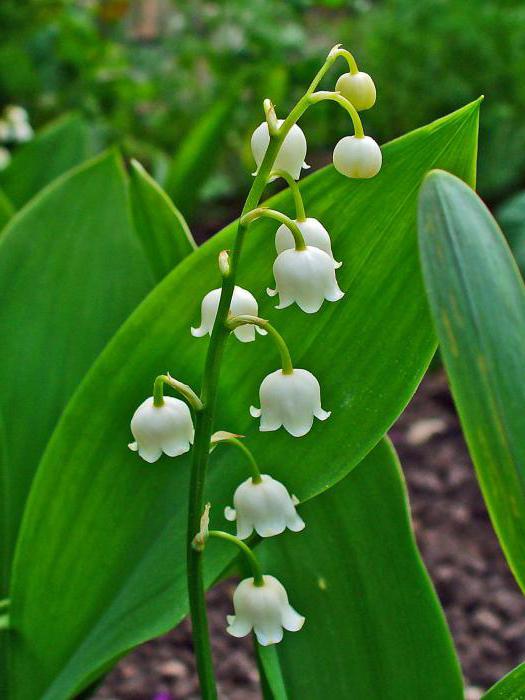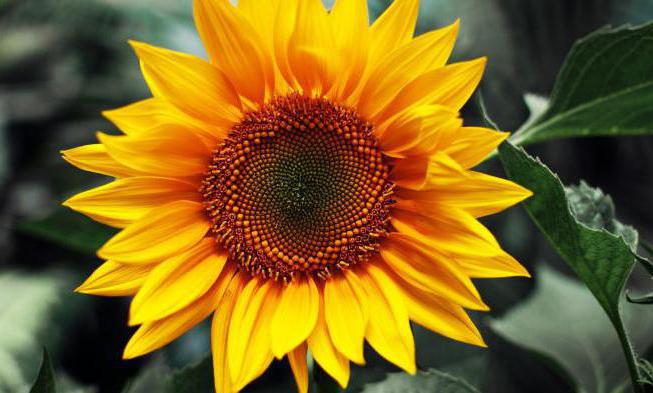Generative organs of plants are a flower, a seed and a fruit. They provide plants with sexual reproduction. In this article we will talk about each of these organs.
Flower
A very important generative organ of flowering plants is the flower. It is a modified shortened shoot, which serves as a reproductive organ not in all plants, but only in angiosperms. The generative organ of flowering plants that interests us is the formation that is on the peduncle. The receptacle is called the extended part of the peduncle. Here are all parts of the flower, the main of which are the pestle and stamens. They are located in the center. Stamens are the male organ, and the female is the pestle. The latter usually consists of an ovary, a column and a stigma. In the ovary there are ovules, where the egg is formed and matures. Anthers and stamen filament are integral parts of the stamen. In anthers there is pollen grain, where sperm are formed.
Perianth
Angiosperms flowering plants also have perianth. What is it for? This is not a generative organ of angiosperms, but its leaves protect the interior of the flower. The sepals are called its outer leaves, usually green. They form a cup. Corolla is formed from inner petals. Perianth is called double if it consists of a corolla and calyx, and simple - if it is composed of identical leaves. Double is characteristic of roses, peas and cherries. A simple lily of the valley and a tulip. Perianth is necessary not only to protect the parts of the flower that are inside, but also to attract pollinators. That is why it is so often characterized by a bright color. Perianth in wind-pollinated plants is often reduced. It can also be represented by films and scales (poplar, aspen, willow, birch, cereals).
Nectaries
Nectaries are called special glands that have some angiosperms flowering plants in their flowers. These glands secrete an odorous, sugary liquid called nectar. It is necessary to attract pollinators.
Monoecious and dioecious plants
So, the flower belongs to the generative organs of the plant. There are two types of flowers by the presence of pistils and stamens. Those plants that have both at the same time are called monoecious (cucumber, hazel, oak, corn). If the pistils and stamens are present on different plants, they are called dioecious (sea buckthorn, willow, willow, poplar).
Inflorescences
Consider now the inflorescences. A plant can have either numerous small, or single large flowers. Small, gathered together, are called inflorescences. They are more visible to pollinators, and are also more efficiently pollinated with the help of wind. There are several types of inflorescences. We list them.
Types of inflorescences

- An ear is a type that is characteristic of plants on the main axis of which there are sessile flowers (without pedicels).
- There is also a complex spike. It is formed by combining several simple ones (examples are rye, wheat).
- The cob is a type of inflorescence characterized by a central thick axis where the sessile flowers are located (one of the examples is the wing-winged butterfly).
- A brush is when the flowers are on the pedicels one after the other on a common axis. Examples are bird cherry, lily of the valley (pictured above).
- There is such a type of inflorescence as a basket. It is characteristic, in particular, for dandelion and chamomile. In this case, a large number of sessile flowers are located on the thickened wide saucer axis.
- The head is another interesting type. It is characteristic of him that small sessile flowers are on a spherical shortened axis (clover).
- There is also a simple umbrella (for example, for primrose or cherry). In this case, on the main axis (shortened), the flowers are located on long, identical pedicels.
- But in parsley or carrots, inflorescences are represented by a whole group consisting of simple umbrellas. This type is called a complex umbrella.
- Unlike the brush, the flowers on the flap are in the same plane. Consequently, pedicels that extend from the central axis have different lengths (pear, yarrow).
- The panicle is a complex inflorescence with several lateral branches, which consist of shields, brushes (lilac, oats, etc.).

Some flowers in some inflorescences consist of only one corolla. In other words, they have no stamens and pestle. Such, for example, is the structure of flowers of plants of such species as chamomile or sunflower (pictured above).
Sexual reproduction of plants
The generative organs of plants are flower, fruit, and seed. In order for the seed to form, it is necessary that the pollen located on the stamens moves on the stigma of the pestle. In other words, pollination is necessary. In the case when pollen is on the stigma of the same flower, self-pollination occurs (wheat, peas, beans). But it often happens differently. In the case of cross-pollination, the pollen of one plant located on the stamens is transferred to the stigma of the pestle of some other. How does she get there? How do plants reproduce? Let's figure it out.
Pollen carriers
Dry and fine pollen is able to tolerate wind (birch, hazel, alder). The flowers of wind-pollinated plants are usually small, folded into inflorescences. They are either poorly developed or have no perianth at all. Pollen can also be carried by insects. In this case, the plants are called insect pollinated. In this process, birds and even some mammals can take part. Typically, the flowers of such plants are fragrant, bright, contain nectar. In most cases, the pollen is sticky, it has special outgrowths - hooks.
For his own purposes, a person can also carry pollen, as a result of which it passes from the stamens to the stigma of pistils. In this case, pollination is called cross. It is used, in particular, to increase productivity or to obtain new varieties of plants.
Male gametophyte
Pollen grains, known to us as pollen, are a male gametophyte that forms in the stamens. These grains contain two cells - generative and vegetative. In the first, sperm are formed - male germ cells.
Female gametophyte
In the ovule, in the ovary of the pestle, a female gametophyte is formed. It is called an eight-nucleus embryo sac. This gametophyte is actually a single cell in which there are eight haploid nuclei. One of them is larger than the rest. It is called an egg cell and is located at the pollen intake. There are also two smaller kernels that are in the center. They are called central nuclei.
Fertilization process
If pollen enters the stigma of the pestle, the vegetative cell begins to grow into the pollen tube. At the same time, it moves the generative cell to the micropile (pollen feeder). Through the last two sperm enter the embryo sac. As a result of this, fertilization occurs. A zygote is formed when one of the sperm merges with the egg. A seed germ then develops from it. As for the second sperm, it merges with the central nuclei (as you remember, there are two of them). So the triploid endosperm of the seed is formed. It accumulates nutrients. Seed peel is formed from the ovum cover. This fertilization process is twofold. It was discovered by S. G. Navashin, a Russian botanist, in 1898. The fruit is formed either from the overgrown wall of the ovary, or from some other parts of the flower.
Generative organs of plants include, as you see, also the seed and the fruit. We briefly describe each of them.
Seed
The composition of the seed includes the seed peel, endosperm and embryo. Outside it is covered with a protective seed coat, quite dense. In the embryo there is a root, kidney, stem and cotyledons, which are the first germinal leaves in a plant. If there is one cotyledon in the embryo, such a plant is called a monocotyledonous. If there are two of them - dicotyledonous. Nutrients are usually found in the cotyledons or endosperm (a special storage tissue). In the latter case, cotyledons are practically undeveloped.
Fetus
This is a rather complex formation, in the creation of which, besides the pestle, some other parts of the flower can also participate: the receptacle, the base of the sepals and petals. The fruit, formed from several pestles, is a combined fruit (blackberry, raspberry).
It should be said that the shape of the fruit is very diverse. It has a different number of seeds. On this basis, single-seed and multi-seeded fruits are distinguished. This is due to the number of ovules in the ovary. Dry and juicy fruits are also distinguished.
So, we have described the organs of plants are generative. In conclusion, we talk about how seeds and fruits are distributed. As for pollen, its transfer was mentioned above.
Seed and fruit distribution
Generative plant organs of interest to us (seeds and fruits), propagating, contribute to the prosperity of species and the spread of plants. They can be transported independently, which is typical for species such as yellow acacia, impatiens, lupins, violets, geraniums. The fruits of these plants crack after ripening and forcefully discard seeds over sufficiently large distances. This distribution method is called autochoria.
The wind can also bear fruit. This method is called anemochoria. Hydrochoria is noted if water is involved in the transfer process, ornithochoria - birds, zoochoria - animals. In these ways, seeds of plants that have juicy fruits are transferred. On the latter, sticky substances or trailers (burdock, string, etc.) often develop. This contributes to the spread of plants. Man also plays a significant role. Especially tangible is its effect on the settlement of plants in recent times, when relations between continents and countries have increased.
So, we talked about how plants reproduce. As you can see, this process is quite complicated. Nevertheless, it is very effective.